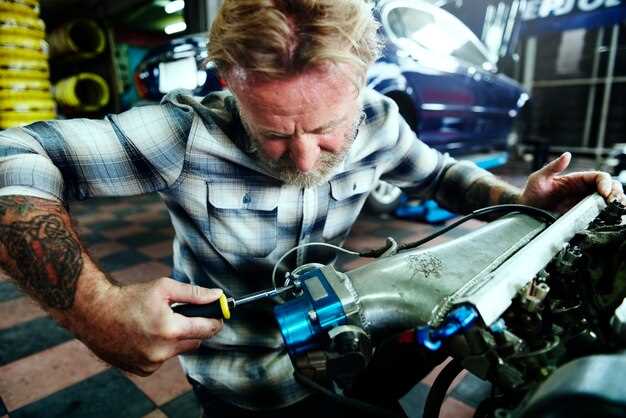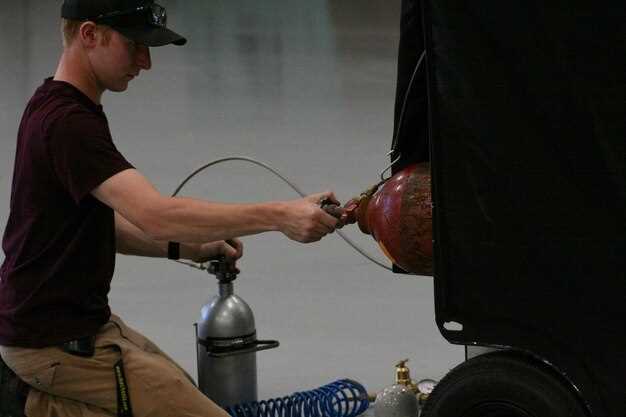
Nitrous oxide systems have become an integral part of modern racing, offering an exhilarating boost in power that can make the difference between winning and losing. For many racers, the allure of increased horsepower is unmatched, and the implementation of nitrous systems has evolved to meet the demands of both professional and amateur motorsport enthusiasts. Understanding how these systems work is essential for anyone looking to enhance their vehicle’s performance effectively.
At its core, a nitrous system introduces nitrous oxide into the engine’s intake, significantly increasing the amount of oxygen available for combustion. This process allows for a greater fuel-to-air mixture, resulting in an explosive increase in power output. However, with this incredible potential comes the responsibility of ensuring proper tuning and safety measures are in place. Overlooking these aspects can lead to catastrophic engine failure or unsafe racing conditions.
In this article, we will explore the different types of nitrous systems available, their components, and the benefits they offer to racing enthusiasts. From wet and dry systems to direct port setups, each configuration has its unique advantages and considerations. By the end of this discussion, you will have a clearer understanding of how to harness the full power of nitrous oxide for your racing endeavors.
Understanding Nitrous Oxide: Composition and Function in Racing

Nitrous oxide, commonly referred to as nitrous, is a powerful chemical compound used in automotive racing to enhance engine performance. Understanding its composition and how it functions can help enthusiasts maximize their vehicle’s power output effectively.
The chemical formula for nitrous oxide is N2O, consisting of two nitrogen atoms and one oxygen atom. This unique composition provides several advantages when injected into an engine:
- Increased Oxygen Availability: Nitrous oxide decomposes at high temperatures, releasing oxygen. This additional oxygen allows for a more complete combustion of fuel, which results in a significant increase in power.
- Cooling Properties: When injected, nitrous oxide expands and cools the intake charge. This cooling effect increases air density, further enhancing the engine’s oxygen supply and performance potential.
- Combustion Efficiency: The presence of nitrous oxide helps to optimize the combustion process. More oxygen enables the engine to burn more fuel effectively, generating greater horsepower.
The functionality of nitrous systems in racing can be summarized through the following key features:
- Direct Injection: Racing enthusiasts typically use either dry or wet nitrous systems. Dry systems inject nitrous directly into the intake, while wet systems mix nitrous with fuel for enhanced performance.
- Control and Timing: Proper control of nitrous injection timing is critical. This ensures that the nitrous is introduced at the optimal moment during the combustion cycle, maximizing its power-enhancing effects.
- Safety Considerations: When utilizing nitrous, it is essential to monitor engine parameters closely. Overuse can lead to engine damage, so understanding the balance between nitrous usage and engine specifications is crucial.
In conclusion, nitrous oxide is a vital tool for racers aiming to boost engine performance. Its unique composition offers increased oxygen availability, enhanced combustion efficiency, and improved overall power output when used correctly.
Choosing the Right Nitrous Kit for Your Vehicle Setup
When selecting a nitrous kit for your vehicle, it’s essential to consider several factors to ensure optimal performance and reliability. First, understand the specific needs of your engine setup. Different engines have varying compression ratios, fuel systems, and overall performance goals. Choose a nitrous kit that complements your engine’s characteristics to maximize horsepower without risking damage.
Next, decide on the type of nitrous system you want to implement: dry or wet. A dry system injects nitrous only, relying on the existing fuel system to provide additional fuel. This option is simpler and can be suitable for moderate boosts. In contrast, wet systems deliver both nitrous and fuel together, providing improved control over the air-fuel ratio and allowing for more aggressive boosts.
Additionally, consider the size of the nitrous jets included in the kit. Kits often come with different jet sizes to allow customization of the nitrous boost level. It’s crucial to match these jets to your engine’s performance capabilities and fuel type. Going too big can lead to engine failure, while too small might not yield the desired results.
Lastly, ensure that the nitrous kit you choose is compatible with the rest of your vehicle’s modifications. If your car has extensive upgrades, such as a high-performance exhaust or a turbocharger, make sure the nitrous system can handle the increased airflow and power demands. Researching user reviews and consulting with experts can also help guide your decision-making process.
Installation Tips and Common Mistakes to Avoid with Nitrous Systems

When installing a nitrous system, proper planning and attention to detail are crucial for maximizing power and ensuring safety. Begin by choosing the right nitrous kit compatible with your vehicle. Researching specific requirements related to your engine setup can prevent installation issues later on.
Prior to installation, ensure that the engine is in good condition and capable of handling the increased power. Conduct a thorough inspection of the fuel system, as it must deliver adequate flow when nitrous is engaged. Upgraded fuel injectors and a high-flow fuel pump may be necessary to support the additional power demands.
Carefully follow the manufacturer’s instructions during installation. Pay particular attention to the placement of the nitrous nozzle; it should be positioned for optimal distribution within the intake manifold. Misalignment can lead to unequal power delivery among cylinders, resulting in engine damage.
One common mistake is failing to properly adjust the fuel pressure settings. Ensure that the nitrous and fuel solenoids are calibrated accurately for the specific application. Incorrect pressure can cause lean conditions, leading to potential detonation and catastrophic failure.
Another frequent oversight is not installing a bottle heater or pressure gauge. A bottle heater helps maintain consistent pressure in the nitrous bottle, which is essential for predictable performance. Monitoring pressure allows for timely adjustments and assures that the system operates within safe limits.
Install all components securely and check for leaks. A poorly connected line can lead to nitrous leakage, creating safety hazards and depriving you of power gains. After installation, perform a leak test to ensure all connections are tight.
Finally, remember that nitrous systems can be an excellent performance enhancer but should be used judiciously. Overdriving or misusing nitrous can cause severe engine damage. Always start with small increments of nitrous and gradually increase as you monitor performance and engine response.



